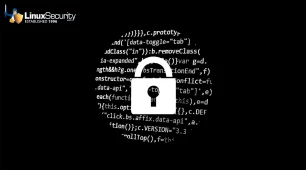-----BEGIN PGP SIGNED MESSAGE-----
Hash: SHA1
______________________________________________________________________________
SUSE Security Announcement
Package: kernel
Announcement ID: SUSE-SA:2006:028
Date: Wed, 31 May 2006 18:00:00 +0000
Affected Products: SUSE LINUX 10.0
SUSE LINUX 9.3
SUSE LINUX 9.2
SUSE LINUX 9.1
SuSE Linux Desktop 1.0
SuSE Linux Enterprise Server 8
SUSE SLES 9
UnitedLinux 1.0
Vulnerability Type: remote denial of service
Severity (1-10): 7
SUSE Default Package: yes
Cross-References: CVE-2005-4798, CVE-2006-0095, CVE-2006-0457
CVE-2006-0554, CVE-2006-0555, CVE-2006-0557
CVE-2006-0741, CVE-2006-0742, CVE-2006-0744
CVE-2006-1055, CVE-2006-1056, CVE-2006-1242
CVE-2006-1342, CVE-2006-1523, CVE-2006-1524
CVE-2006-1525, CVE-2006-1527, CVE-2006-1863
CVE-2006-1864, CVE-2006-2271, CVE-2006-2272
CVE-2006-2274
Content of This Advisory:
1) Security Vulnerability Resolved:
various kernel security problems
Problem Description
2) Solution or Work-Around
3) Special Instructions and Notes
4) Package Location and Checksums
5) Pending Vulnerabilities, Solutions, and Work-Arounds:
See SUSE Security Summary Report.
6) Authenticity Verification and Additional Information
______________________________________________________________________________
1) Problem Description and Brief Discussion
The Linux kernel has been updated to fix various security problems,
listed below.
Note that some of the updates have already been released end of last
week.
- AppArmor in SUSE Linux 10.0 and SUSE Linux Enterprise Server 9 SP3
could crash the machine by an negative dentry reference due to
for instance vanishing path component during a system call of a
profiled application.
- AppArmor in SUSE Linux 10.0 and SUSE Linux Enterprise Server 9 SP3
failed to prevent PTRACE_ME on a confined parent, allowing an
infected called program to gain the same rights as its parent
process.
- CVE-2006-2274: Linux SCTP allows remote attackers to cause a
denial of service (infinite recursion and crash) via a packet that
contains two or more DATA fragments, which causes an skb pointer
to refer back to itself when the full message is reassembled,
leading to infinite recursion in the sctp_skb_pull function.
- CVE-2006-2272: Linux SCTP allowed remote attackers to cause a
denial of service (kernel panic) via incoming IP fragmented (1)
COOKIE_ECHO and (2) HEARTBEAT SCTP control chunks.
- CVE-2006-2271: The ECNE chunk handling in Linux SCTP allowed
remote attackers to cause a denial of service (kernel panic) via
an unexpected chunk when the session is in CLOSED state.
- CVE-2006-1864: Due to incorrect argument checking it was possible
to break out of chroots on smbfs file systems.
- CVE-2006-1863: Due to incorrect argument checking it was possible
to break out of chroots on cifs file systems.
- CVE-2006-1527: NETFILTER SCTP conntrack: Fixed an infinite loop
in sctp handling, which could be caused by a remote attacker.
- CVE-2006-1525: IPV4: Fixed a machine crash in ip_route_input that
could be triggered via the "route" command from local attackers.
- CVE-2006-1524: shmat: stop mprotect from giving write permission
to a read-only shared memory attachment.
- CVE-2006-1523: __group_complete_signal: Removed a bogus BUG_ON which
could lead to unwanted process crashes.
- CVE-2006-1342: A minor information leak in SO_ORIGINAL_DST was fixed.
- CVE-2006-1242: Fix IPv4 IPID generation to avoid possible idle scans
against the machine.
- CVE-2006-1056: i386/x86-64: Fix AMD x87 information leak between
processes.
- CVE-2006-1055: sysfs: Zero terminate sysfs write buffers.
- CVE-2006-0744: When the user could have changed %RIP always force IRET.
- CVE-2006-0742: IA64 only: Don't declare die_if_kernel as noreturn,
otherwise local attackers can crash the machine.
- CVE-2006-0741: x86_64 only: Always check that RIPs are canonical
during signal handling, otherwise local attackers could crash
the machine.
- CVE-2006-0557: Add an upper boundary to mempolicy node arguments
to avoid potentially local crashes.
- CVE-2006-0555: A normal user was able to panic the NFS client with
direct I/O.
- CVE-2006-0554: A XFS ftruncate() bug could expose stale data.
- CVE-2006-0457: A race condition in the add_key, request_key,
and keyctl functions allows local users to cause a denial of service
(crash) or read sensitive kernel memory by modifying the length of
a string argument between the time that the kernel calculates the
length and when it copies the data into kernel memory.
(Please Note that keyctls are not enabled in SUSE Linux up to 10.0).
- CVE-2006-0095: dm-crypt: Zero key before freeing it to avoid leakage.
- CVE-2005-4798: Creation of long symlinks on the NFS server could
crash the client machine.
Additionally some non security bug fixes include:
- Lots of bugfixes in the SUSE Linux Enterprise 9 and SUSE Linux
9.1 kernel.
- The S/390 tape driver is now opensource and the previous oco drivers are no longer supported.
2) Solution or Work-Around
There is no known workaround, please install the update packages.
3) Special Instructions and Notes
SPECIAL INSTALLATION INSTRUCTIONS
================================ The following paragraphs guide you through the installation
process in a step-by-step fashion. The character sequence "****"
marks the beginning of a new paragraph. In some cases, the steps
outlined in a particular paragraph may or may not be applicable
to your situation. Therefore, make sure that you read through
all of the steps below before attempting any of these
procedures. All of the commands that need to be executed must be
run as the superuser 'root'. Each step relies on the steps
before it to complete successfully.
**** Step 1: Determine the needed kernel type.
Use the following command to determine which kind of kernel is
installed on your system:
rpm -qf --qf '%{name}\n' /boot/vmlinuz
**** Step 2: Download the packages for your system.
Download the kernel RPM package for your distribution with the
name indicated by Step 1. Starting from SUSE LINUX 9.2, kernel
modules that are not free were moved to a separate package with
the suffix '-nongpl' in its name. Download that package as well
if you rely on hardware that requires non-free drivers, such as
some ISDN adapters. The list of all kernel RPM packages is
appended below.
The kernel-source package does not contain a binary kernel in
bootable form. Instead, it contains the sources that correspond
with the binary kernel RPM packages. This package is required to
build third party add-on modules.
**** Step 3: Verify authenticity of the packages.
Verify the authenticity of the kernel RPM package using the
methods as listed in Section 6 of this SUSE Security
Announcement.
**** Step 4: Installing your kernel rpm package.
Install the rpm package that you have downloaded in Step 2 with
the command
rpm -Uhv
replacing with the filename of the RPM package
downloaded.
Warning: After performing this step, your system may not boot
unless the following steps have been followed
completely.
**** Step 5: Configuring and creating the initrd.
The initrd is a RAM disk that is loaded into the memory of your
system together with the kernel boot image by the boot loader.
The kernel uses the content of this RAM disk to execute commands
that must be run before the kernel can mount its root file
system. The initrd is typically used to load hard disk
controller drivers and file system modules. The variable
INITRD_MODULES in /etc/sysconfig/kernel determines which kernel
modules are loaded in the initrd.
After a new kernel rpm has been installed, the initrd must be
recreated to include the updated kernel modules. Usually this
happens automatically when installing the kernel rpm. If
creating the initrd fails for some reason, manually run the
command
/sbin/mkinitrd
**** Step 6: Update the boot loader, if necessary.
Depending on your software configuration, you either have the
LILO or GRUB boot loader installed and initialized on your
system. Use the command
grep LOADER_TYPE /etc/sysconfig/bootloader
to find out which boot loader is configured.
The GRUB boot loader does not require any further action after a
new kernel has been installed. You may proceed to the next step
if you are using GRUB.
If you use the LILO boot loader, lilo must be run to
reinitialize the boot sector of the hard disk. Usually this
happens automatically when installing the kernel RPM. In case
this step fails, run the command
/sbin/lilo
Warning: An improperly installed boot loader will render your
system unbootable.
**** Step 7: Reboot.
If all of the steps above have been successfully completed on
your system, the new kernel including the kernel modules and the
initrd are ready to boot. The system needs to be rebooted for
the changes to be active. Make sure that all steps have been
completed then reboot using the command
/sbin/shutdown -r now
Your system will now shut down and restart with the new kernel.
4) Package Location and Checksums
The preferred method for installing security updates is to use the YaST
Online Update (YOU) tool. YOU detects which updates are required and
automatically performs the necessary steps to verify and install them.
Alternatively, download the update packages for your distribution manually
and verify their integrity by the methods listed in Section 6 of this
announcement. Then install the packages using the command
rpm -Fhv
to apply the update, replacing with the filename of the
downloaded RPM package.
x86 Platform:
SUSE LINUX 10.0:
3a83b6b2ac93a33ccbef968f91ea1599
82d114ebbb80523fcc9c772f15f5bf59
00b0c272a99a222cdaa8ed2932ed4e72
9b6a9c3f4b6e848a22032d6aa60e01ed
cd834d6bfffe716eb0ba7f65835da3b3
6b6a48bdd2acaae2a17006a3266ceb1d
08a960b9f08a18b70cf932ed49bce39c
f5439ee02ca40c4fb123d15a43082390
50556d3b9f06e2a850f16cc37260ae02
5546aa0f75ac02c60a98c8530182b125
4379e54d1bb5da4a0145f18e15a50ebe
4a6b8022c5e785ab2da2be4a872baf52
5c0566baf35363ca22af29bd61bc6117
15b889451fd0837cd117c9e4b7adf1ab
SUSE LINUX 9.3:
2410d834eab16f1626457bb02b2a1a74
92d05ecd1c3b69768129ec48f857003c
c7d85941249af8919e53fb114f64d9ab
2ca07b757a0ecbdc2ae162fdbb74fe84
abe9aef7428dcae8d4cb6e10e9160250
d2881e4ce268834485cc6109d0f053c3
48c6295b8f68d5c80a9f3fbeef1edcc3
a564139b3c87831391474cb9c745ab52
fce134e65cf241b2c41051af535f9fa5
174c52764d54f03a47406d0a01370e25
4e0495322a4b2f38da8265df47051c43
072e3bf41cab06360bd87c30bfb0b15a
1a644cf0d30553f845c44767d009e8d2
af5d6fdbcdcf67b15780cfabd6bde63d
eb1ec5422e5dda9558fa8367ff042901
5b7745b79e8bd19e42d68628889daa1a
SUSE LINUX 9.2:
b117fe5ca34185091a50c7f2bf17b8c5
e6fcd60b751a8811fe3264a5423dddf4
fe6b529d2ede5d43301db7a8ab12f9bf
30f59434537cee4176b2511ed2875184
ef6a69c4982c498bf4f2855a75047f38
a3f3ce1148b2f94997108da61ab640a8
56791a070623ab550e71a14ee329a412
cead4b081e6a01e0848ec26f652c9b8a
c4e9b67ee0740d86e1565c3aaa4ac250
854c60aea3df5d4671bf8d902d842214
e5e1fdcfb20887ca944be07e1ffd5835
ffe2733bb885439897af61680dfa386d
ddbb39bfa6ddec0079e57fb378465346
f98c69a01d4a93d1e3f7eb4a0f81a481
SUSE LINUX 9.1:
d19076aa179801c307fd137ebe10900f
4a25e927ab95b0173cfafa394f91f207
677290d102ac4b238f7c6dd12808f554
fadc7d71a944ad5e1c3857cc0910cde1
7aeeb6366b2528975004d21e17e1453e
93611206083c3d867d7f8e697e0b9683
Platform Independent:
SUSE LINUX 9.3:
c2c3264f47360840d988a878845e0280
SUSE LINUX 9.2:
0c39c810d06835f4e4b4ba3b5283d5e3
SUSE LINUX 9.1:
e5c63b4d0d11b19d198b08646c2bfa89
ec17f895636cda948927ca6a37e5f990
Power PC Platform:
SUSE LINUX 10.0:
063b606929bec2b369675009b654c2b3
ae9e7b8c030d846dbebd2185d6dc233d
922320a95ab56d93147306c6f2a1a0b5
ff773fb617e428ad9cb8ccf9e8acccfb
3853da634e2914f6952fbf7378ee050a
x86-64 Platform:
SUSE LINUX 10.0:
f6743cde2b350ff70eb251c855515702
074b1a8d73ddad88067690c46bddddb4
268b29a0654711992b9583e8528d175a
f6986f14c6f800b7794569b9543f4ffa
696e7f31a7269890f44338b9c81e8614
d2a85c7eba759d921ceb760b670e24d4
d1a572732edce8d2163b84d9eb2a6151
ebbadcab9a3b67e58e430a6819c8214d
SUSE LINUX 9.3:
26fd19dd2b4b76545cb9a2d7d1206980
ff1adebf486711688f6d8ec25a2c8442
c7b1d557bf3980023d4be44ffb51029b
66ca05be8638d26d85c5335d8b453770
a4a01f6e186586ab97eb09cf81f8f71c
ba55d640082d2d2288e4e01f07f9f48e
SUSE LINUX 9.2:
7598a1386bff406c10732459ad7daf3f
ee103b10429dbedf672e42a6d783d487
b05fceea2901e5519b5c9e97f9a05422
f1da6bf6bb890f23ec43099beeb8fc33
a35e63ed009211c0f56b45f2663e9f10
583513d1ae02adb0581331be8caca884
SUSE LINUX 9.1:
52a626483d1c45c5083ba02cdce0ccdf
b4a1fdb2f84017168e646b2b36b46049
7a095385c5f2a11e5c6f277d006d9b60
a7d92f0e5fe3a79803b43b8dc32b96be
Sources:
SUSE LINUX 10.0:
a7b4d8a829b820bf31b1b7ea8fb515a6
b18631694f0c4a90f7998017a0686da0
8d41d57e04f90958209039bc0e862152
97b6bc393384ea961075ecf3f101fb83
acdfc8e7aef4da43b4c527efe1df62f3
cbcfb3e48d275ed33597314608dd3737
679f570d3af962b4ba92c69be0128f24
605aa540269d6c3bee3bee1b7b505301
c01dd8279fa7899d8d21d84517aa4459
bd99426598c23c5cf4952ed9c0b9cfe5
27a2fce49d08338273edf412347450e0
SUSE LINUX 9.3:
7a595d7e743780b65db104598cfdb2ca
aba93f8bf280e9b9508b862e2acd8c26
2690cdea0a1451ddf39244af68a32f01
375c09c4d956c9a90eb1832fe1b0e7ba
4e89c3f5123a494a22de9975aabdea64
829bcfd76fb4bca1a3c6ff4be1c87791
efbc9e5109781d675df5f24ddae4817d
b23f55072c9d48bc141be9112335ea2f
0e7d187812622e4a394e82acb36a137e
adbabf2df36f8f6e31bf7fee3a0e3b19
b30f1abc6f5f589bb96fcfa55b766a23
SUSE LINUX 9.2:
2045cdb339052222eb43897c7f6ec68d
f57c0c7bfbd3ddb7934d3521e3ad2971
ad5227e1256c47049b1940cd247bf342
835713dab6b9996a0b504442c5c548fb
5e5d999ec4074533ff8a334f0ceba606
5ad0caa2141232a2b6e853ca00c0a542
178da4abc15ce40ef4672f3f90b7b4ff
a0f46baf2261a7673ad603a31df8105a
ccb95498165c64de312f15a854a2bd12
5348434281762cd80dee0d2c6fbb48b8
SUSE LINUX 9.1:
2a46b881826169a01adea054ae6910b9
fc59f9c8abb4f3fd81bfa6c2a7e875ad
3a5014aed0d55e97b5bcdc5545b1845c
3d9ac7612fa3bb40a7f72bcffd5c8900
1d9002c41679564c5b793f65d82cf15c
fb55f67a4cf66887f0046e6759ebc6ce
415ace617e7d083988db2104744dc91f
3d6bd83f8ee9c778f391a6422fe227bb
a3a395f746078a8c521f7bd7dc8c45c0
8eaa87737cc95dd9035f4bdcd87c8170
a78615451a4cacc0e5c516b67490df17
5ca629212597b78e740f29ded4541abf
Our maintenance customers are notified individually. The packages are
offered for installation from the maintenance web:
SUSE SLES 9
SUSE CORE 9 for x86
SuSE Linux Enterprise Server 8 for IBM S/390 and IBM zSeries
SUSE SLES 9 for AMD64 and Intel EM64T
SUSE SLES 9 for IBM zSeries 64bit
SUSE CORE 9 for IBM S/390 31bit
SUSE SLES 9 for IBM POWER
SUSE CORE 9 for Itanium Processor Family
UnitedLinux 1.0
SuSE Linux Enterprise Server 8 for IBM zSeries
SuSE Linux Enterprise Server 8 for IBM iSeries and IBM pSeries
SuSE Linux Desktop 1.0
______________________________________________________________________________
5) Pending Vulnerabilities, Solutions, and Work-Arounds:
See SUSE Security Summary Report.
______________________________________________________________________________
6) Authenticity Verification and Additional Information
- Announcement authenticity verification:
SUSE security announcements are published via mailing lists and on Web
sites. The authenticity and integrity of a SUSE security announcement is
guaranteed by a cryptographic signature in each announcement. All SUSE
security announcements are published with a valid signature.
To verify the signature of the announcement, save it as text into a file
and run the command
gpg --verify
replacing with the name of the file where you saved the
announcement. The output for a valid signature looks like:
gpg: Signature made using RSA key ID 3D25D3D9
gpg: Good signature from "SuSE Security Team "
where is replaced by the date the document was signed.
If the security team's key is not contained in your key ring, you can
import it from the first installation CD. To import the key, use the
command
gpg --import gpg-pubkey-3d25d3d9-36e12d04.asc
- Package authenticity verification:
SUSE update packages are available on many mirror FTP servers all over the
world. While this service is considered valuable and important to the free
and open source software community, the authenticity and the integrity of
a package needs to be verified to ensure that it has not been tampered
with.
There are two verification methods that can be used independently from
each other to prove the authenticity of a downloaded file or RPM package:
1) Using the internal gpg signatures of the rpm package
2) MD5 checksums as provided in this announcement
1) The internal rpm package signatures provide an easy way to verify the
authenticity of an RPM package. Use the command
rpm -v --checksig
to verify the signature of the package, replacing with the
filename of the RPM package downloaded. The package is unmodified if it
contains a valid signature from build@suse.de with the key ID 9C800ACA.
This key is automatically imported into the RPM database (on
RPMv4-based distributions) and the gpg key ring of 'root' during
installation. You can also find it on the first installation CD and at
the end of this announcement.
2) If you need an alternative means of verification, use the md5sum
command to verify the authenticity of the packages. Execute the command
md5sum
after you downloaded the file from a SUSE FTP server or its mirrors.
Then compare the resulting md5sum with the one that is listed in the
SUSE security announcement. Because the announcement containing the
checksums is cryptographically signed (by security@suse.de), the
checksums show proof of the authenticity of the package if the
signature of the announcement is valid. Note that the md5 sums
published in the SUSE Security Announcements are valid for the
respective packages only. Newer versions of these packages cannot be
verified.
- SUSE runs two security mailing lists to which any interested party may
subscribe:
suse-security@suse.com
- General Linux and SUSE security discussion.
All SUSE security announcements are sent to this list.
To subscribe, send an e-mail to
.
suse-security-announce@suse.com
- SUSE's announce-only mailing list.
Only SUSE's security announcements are sent to this list.
To subscribe, send an e-mail to
.
For general information or the frequently asked questions (FAQ),
send mail to or
.
==================================================================== SUSE's security contact is or .
The public key is listed below.
====================================================================





















